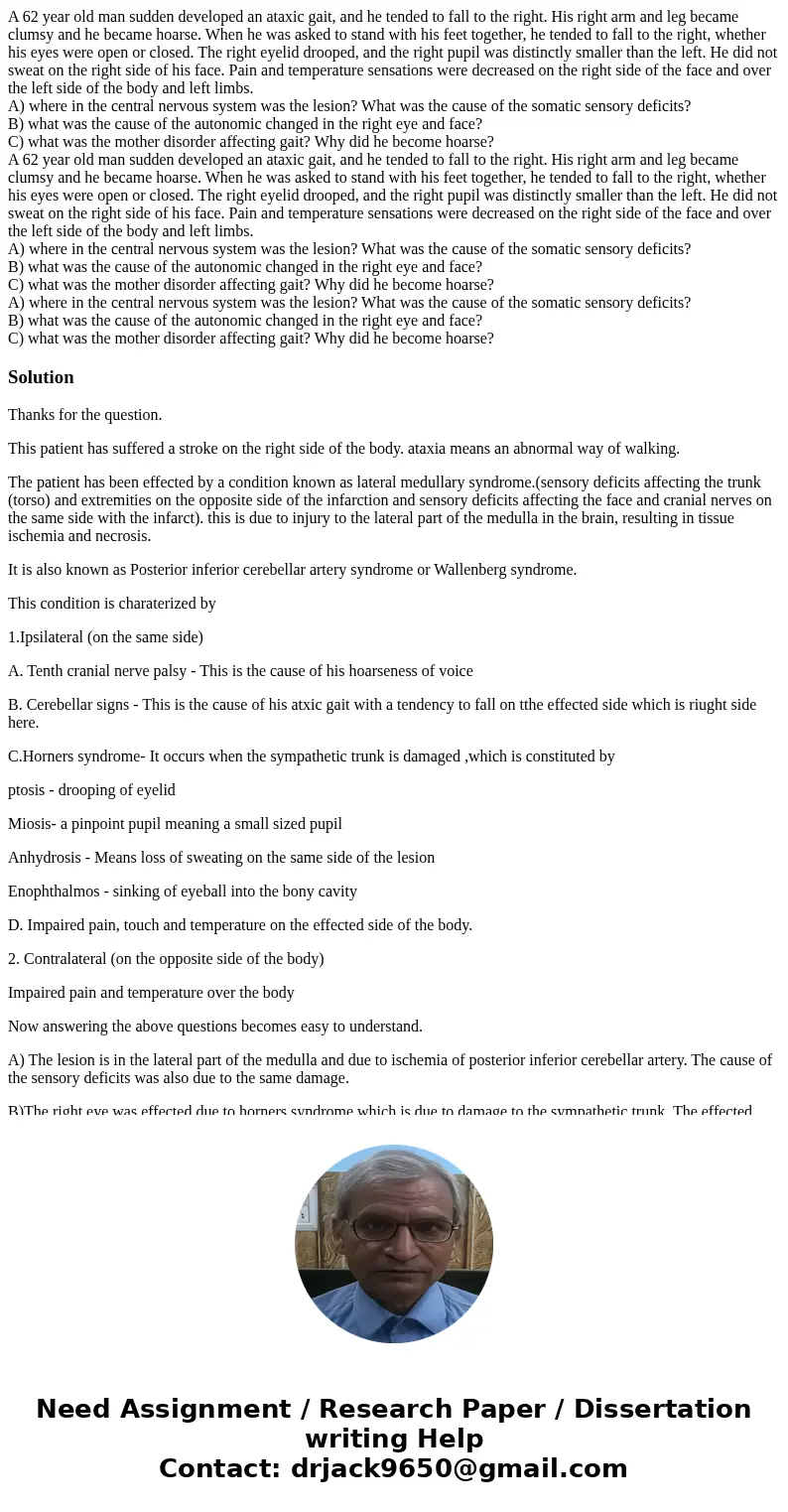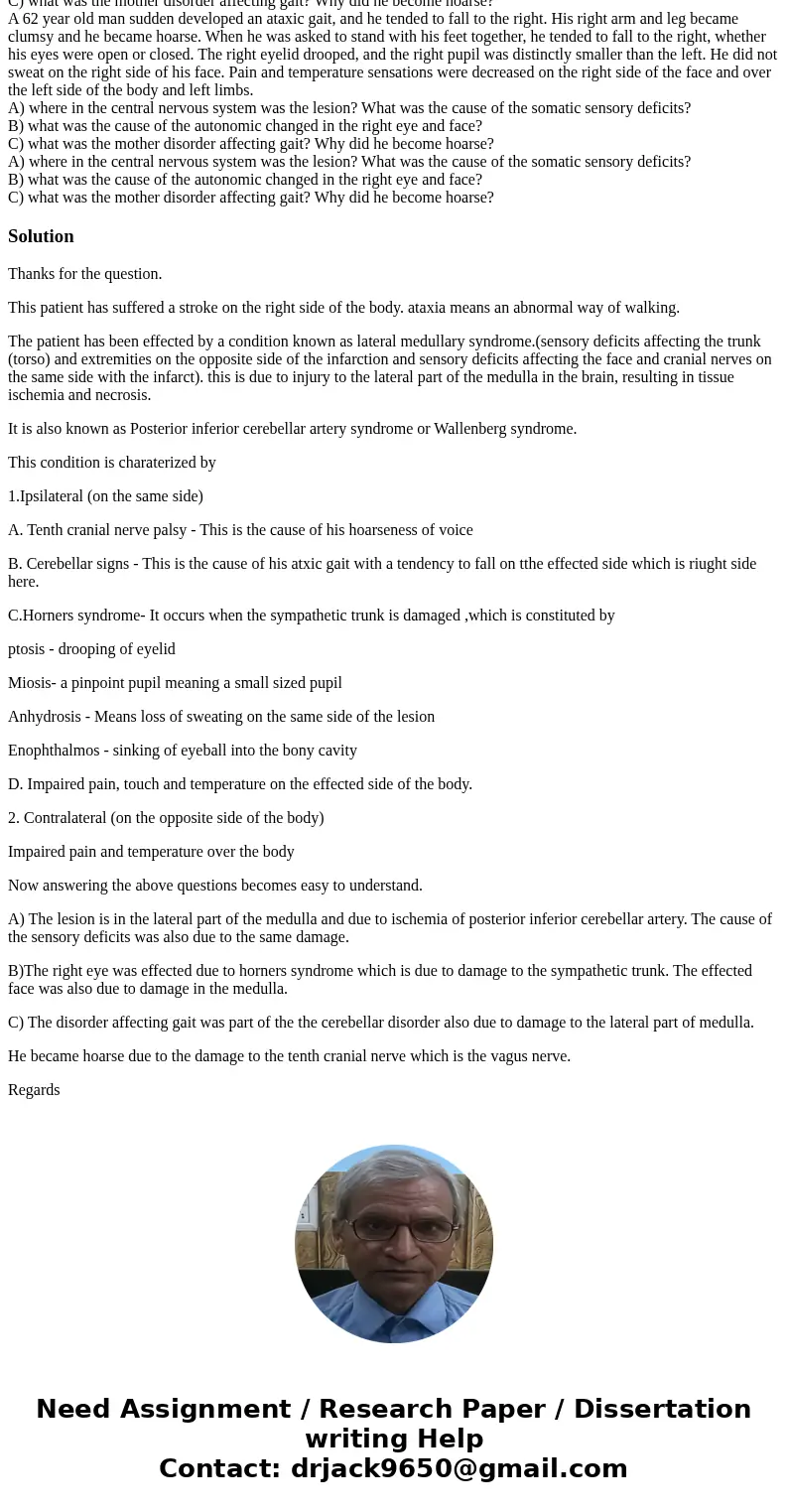A 62 year old man sudden developed an ataxic gait and he ten
Solution
Thanks for the question.
This patient has suffered a stroke on the right side of the body. ataxia means an abnormal way of walking.
The patient has been effected by a condition known as lateral medullary syndrome.(sensory deficits affecting the trunk (torso) and extremities on the opposite side of the infarction and sensory deficits affecting the face and cranial nerves on the same side with the infarct). this is due to injury to the lateral part of the medulla in the brain, resulting in tissue ischemia and necrosis.
It is also known as Posterior inferior cerebellar artery syndrome or Wallenberg syndrome.
This condition is charaterized by
1.Ipsilateral (on the same side)
A. Tenth cranial nerve palsy - This is the cause of his hoarseness of voice
B. Cerebellar signs - This is the cause of his atxic gait with a tendency to fall on tthe effected side which is riught side here.
C.Horners syndrome- It occurs when the sympathetic trunk is damaged ,which is constituted by
ptosis - drooping of eyelid
Miosis- a pinpoint pupil meaning a small sized pupil
Anhydrosis - Means loss of sweating on the same side of the lesion
Enophthalmos - sinking of eyeball into the bony cavity
D. Impaired pain, touch and temperature on the effected side of the body.
2. Contralateral (on the opposite side of the body)
Impaired pain and temperature over the body
Now answering the above questions becomes easy to understand.
A) The lesion is in the lateral part of the medulla and due to ischemia of posterior inferior cerebellar artery. The cause of the sensory deficits was also due to the same damage.
B)The right eye was effected due to horners syndrome which is due to damage to the sympathetic trunk. The effected face was also due to damage in the medulla.
C) The disorder affecting gait was part of the the cerebellar disorder also due to damage to the lateral part of medulla.
He became hoarse due to the damage to the tenth cranial nerve which is the vagus nerve.
Regards


 Homework Sourse
Homework Sourse